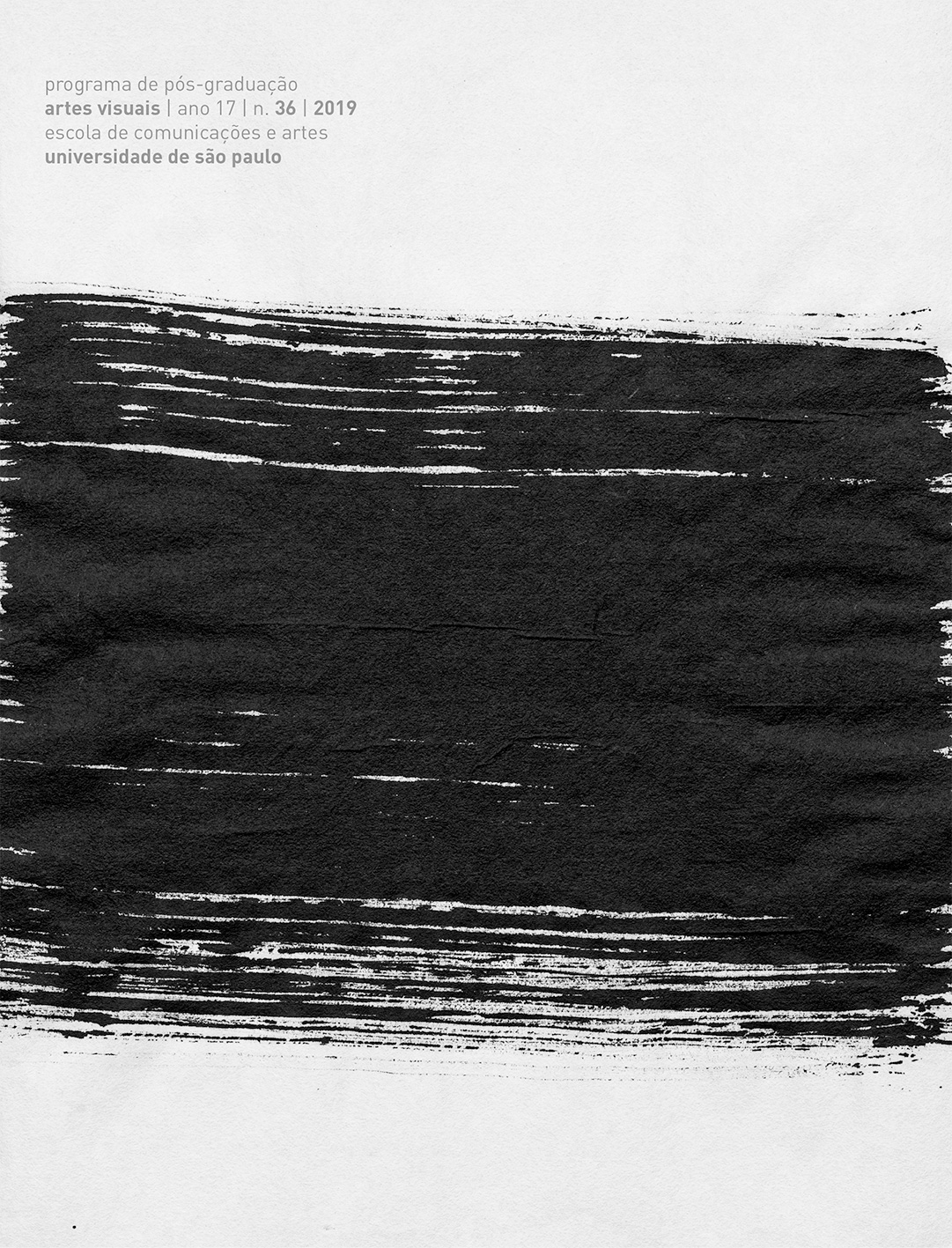Mangue Bangue, filme-limite
DOI :
https://doi.org/10.11606/issn.2178-0447.ars.2019.146134Mots-clés :
cinema marginal, Hélio Oiticica, cinema experimental, merginália, quase-cinemaRésumé
O propósito deste artigo é apresentar uma análise do “filme-limite” Mangue Bangue (1971), de Neville d’Almeida, tendo-se em vista a sua proximidade a questões e propostas contemporâneas do parceiro do cineasta, o artista plástico Hélio Oiticica, e ressaltando a convergência de ambos os artistas na experimentação com a forma cinema em interface com distintas mídias visuais e audiovisuais. Releva-se o contexto de parcerias artísticas que persistiam clandestinamente em torno da experimentação formal, de busca de ampliação das sensibilidades, catalisada pela precariedade dos meios técnicos à disposição, por necessidade e negação às convenções do cinema narrativo-representativo-industrial e à repressão estatal no período mais duro da ditadura civil-militar brasileira.
##plugins.themes.default.displayStats.downloads##
Téléchargements
Publiée
Numéro
Rubrique
Licence
É responsabilidade dos autores a obtenção da permissão por escrito para usar em seus artigos materiais protegidos por lei de Direitos Autorais. A revista Ars não é responsável por quebras de Direitos Autorais feitas por seus colaboradores.
Os autores mantêm os direitos autorais e concedem à revista o direito de primeira publicação, com o trabalho licenciado sob Licença Creative Commons do tipo CC-BY.
Os licenciados têm o direito de copiar, distribuir, exibir e executar a obra e fazer trabalhos derivados dela, inclusive para fins comerciais, conquanto deem os devidos créditos ao autor ou licenciador, na maneira especificada por estes.
O licenciado se compromete a oferecer os créditos apropriados, o link para acesso à licença e a informar caso qualquer alteração no material original tenha sido feita.
Conquanto respeitados os termos da licença, não é permitida ao licenciador/autor a revogação dessas condições.
Após a publicação dos artigos, os autores permanecem com os direitos autorais e de republicação do texto, sendo permitida sua publicação posterior exclusivamente em livros inéditos e coletâneas.



